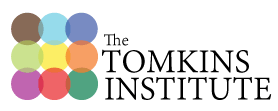Goals:
- Be able to describe the drive auxiliaries and understand Tomkins’s scientific concept of shame.
- Be able to describe and classify the most common reactions to shame.
- Be able to recognize the role of shame in therapeutic or interpersonal impasses.
Readings:
Nathanson S&P, “Dissmell and Disgust,” Chapter 9, pp. 121-133.
TT, Donald L. Nathanson, “Hunger/Disgust/Shame-Questions,” December 2, 1997.
Bulletin, v2, #2, 1995, David O. Wilson, “Dissmell and Shame,” pp. 21-23.
Nathanson S&P, “Shame-Humiliation,” Chapter 10, pp. 134-139.
Nathanson S&P, “The Compass of Shame,” Chapter 22, pp. 305-314.
SAT, Donald L. Nathanson, “Adaptive Value of an Affect,” January 24, 1998.
TT, James Duffy, “Backed up Humiliation,” July 8, 1998.
Bulletin, v4, #1-2-3, 1997, Melvyn A. Hill, “Negative Therapeutic Reaction,” pp. 14-15.
Bulletin, v1, #3-4, 1994, Vernon Kelly, “Intimate Notes,” pp. 24-26.
Discussion Questions:
- Describe drive auxiliaries and how they can generalize to situations in which drives are not activated.
- Why did Tomkins define shame as an affect auxiliary?
- What are the relationships, if any, among disgust, dissmell, and shame?
- How is guilt related to shame?
- The compass of shame classifies four ways of reacting to shame. What are they?
- Give examples of each type of reaction.
- How does shame amplify the interruption of positive affect?
- What is the social value of shame?
- What is backed up affect?
- Why does the therapeutic situation give rise to a fear of being shamed?
- Give examples of how shame interferes with interpersonal relationships or causes a therapeutic impasse.
Share your reflection here:
Session 2: Drive Auxiliaries, Affect Auxiliary
